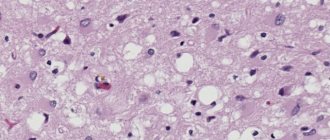Many modern personality psychologists believe that there are five basic personality characteristics , often referred to as the "Big Five" . The five personality factors described in the theory are extraversion, agreeableness, openness to experience, conscientiousness, and neuroticism.
Photo: Illustration by Joshua Seong. © Verywell, 2020. / FSR
Trait theories of personality have long attempted to determine exactly how many personality traits there are. Earlier theories proposed many possible traits, including Gordon Allport's list of 4,000 personality traits, Raymond Cattell's 16 personality factors, and Hans Eysenck's three-factor theory.
However, many researchers felt that Cattell's theory was too complex and Eysenck's theory was too limited in scope. The resulting five-factor theory describes the core traits that serve as the building blocks of personality.
The Big Five personality traits, also known as the Five Factor Model (FFM), is a model based on common language descriptors of personality.
When factor analysis (a statistical method) is applied to personality survey data, some words used to describe aspects of personality are often applied to the same person.
For example, someone described as conscientious is more likely to be described as “always prepared” rather than “dirty.” Therefore, this theory is based on associations between words and not on neuropsychological experiments.
Characteristic factors of the Big Five
Today, many researchers believe that these are the five main personality traits. The number of works proving this theory has been growing for many years (starting with the study of D. W. Fiske (1949), later supplemented by other researchers W. Norman (1967), L. Goldberg (1981), R. McCrae and P. Costa (1987) ).
The Big Five are broad categories of personality traits. Although there is a significant body of literature supporting this five-factor model of personality, researchers do not always agree on the exact labels for each dimension.
It is important to note that each of the five personality factors represents a range between two extremes. For example, extraversion is a continuum between extreme extraversion and extreme introversion.
In the real world, most people are located somewhere between the two polar extremes of each dimension.
This theory uses common language descriptors and therefore proposes five broad dimensions commonly used to describe human personality and psyche.
Beneath each proposed global factor are a number of interrelated and more specific primary factors.
These five categories are usually described as follows:
Extraversion
(Extraversion) Extraversion (outgoing / energetic or solitary / reserved). Energy, positive emotions, self-confidence, talkativeness, sociability and a tendency to seek stimulation in the company of others.
A high degree of extraversion is often perceived as attention-seeking and dominant. Low extraversion produces a reserved, reflective personality that may be perceived as aloof or self-absorbed.
Extroverts tend to dominate social settings, unlike introverts who may act more shy and reserved.
| Characteristics of people with high degrees of extraversion | Characteristics of People Low in Extraversion |
|
|
Goodwill
(Agreeableness) Goodwill (friendly/compassionate or difficult/distant). Tendency to be compassionate and cooperative rather than suspicious and antagonistic towards others. It is also an indicator of trust and helpfulness, and whether a person is generally balanced or not.
A high degree of agreeableness is often seen as naivety or submissiveness. People with a low degree are often competitive or difficult people who may be seen as argumentative or untrustworthy.
| Characteristics of People with High Agreeableness | Characteristics of People Low in Agreeableness |
|
|
Integrity
(Conscientiousness) Conscientiousness (efficiency/organization or ease/carelessness). The tendency to be organized and reliable, to exercise self-discipline, to act obediently, to strive for achievement, and to favor planned rather than spontaneous behavior.
High conscientiousness is often perceived as stubbornness and obsession. Low conscientiousness is associated with flexibility and spontaneity, but can also manifest as sloppiness and unreliability.
| Characteristics of People with High Conscientiousness | Characteristics of People Low in Conscientiousness |
|
|
Neuroticism (Neuroticism)
(Neuroticism) Neuroticism (sensitive/nervous or secure/confident). Tendency to psychological stress. Tendency to easily experience unpleasant emotions such as anger, anxiety, depression, and vulnerability.
Neuroticism also refers to the degree of emotional stability and impulse control and is sometimes referred to by its low pole, “emotional stability.”
High stability manifests itself as a stable and calm personality, but may be seen as insincere and indifferent.
Low stability is expressed as a reactive and excitable personality, often very dynamic people, but they may be perceived as unstable or insecure. Additionally, people with higher levels of neuroticism tend to have poorer psychological well-being.
| Characteristics of people with high degrees of neuroticism | Characteristics of People Low in Neuroticism |
|
|
Openness to experience
(Openness to Experience) Openness to experience (inventive/curious or consistent/cautious). Reflects the degree of intellectual curiosity, creativity and desire for novelty and variety. Also described as the degree to which a person is imaginative or independent.
High openness may be perceived as unpredictability or lack of attention. More likely to engage in risky behavior or drug use.
People high in openness pursue self-actualization specifically by seeking intense, euphoric experiences. Conversely, people with low openness strive to fulfill themselves through persistence and are characterized as pragmatic and data-driven, sometimes even perceived as dogmatic and introverted.
Some disagreement remains regarding how to interpret and contextualize the openness quotient.
| Characteristics of People with High Openness to Experience | Characteristics of People Low in Openness to Experience |
|
|
Personality traits
According to L.M. Fridman and I.Yu. Kulagina (1991), key system-forming personality traits
are: emotionality, activity, self-regulation and motivation.
Emotionality is a set of personality qualities that determine the dynamics of the emergence, course and cessation of emotional states; sensitivity to emotional situations. Activity is a personality characteristic that determines the intensity, duration, frequency and variety of actions or activities of any kind performed. Self-regulation is a systemic characteristic that reflects an individual’s ability to function sustainably in various living conditions. The significance of this characteristic is manifested in the individual’s intentional regulation of the parameters of his functioning (state, behavior, activity, interaction with the environment), which are assessed by the subject as desirable. Drive is a motivational component of character.
As noted above, psychologists often characterize people based on a specific set (or system) of traits. Personality traits are generalized characteristics that represent a number of interrelated psychological characteristics. The Cattell test described below is based on exactly this approach. We can give examples of several of the most fundamental personality traits (or factors) - such as: 1) emotionality, 2) dominance, 3) morality (Melnikov, Yampolsky, 1985, pp. 18-63).
personality typologies are widely used in psychology.
. Based on the dominant spatio-temporal orientation, one can identify personality types such as “memoirist,” “opportunist,” and “forecaster.” Differences in need-volitional experiences make it possible to distinguish “pessimists”, “balanced” and “optimists”. According to content orientations, a person can be a “business person,” an “extrovert” (including a “collectivist”), a “player,” or an “introvert.” According to the level of mastery of activity - “student”, “performer”, “inquisitive”, “creator”. Personality types according to the dominant forms of implementation of activity are the following: “transformer”, “contemplator”, “orator”, “thinker” (Friedman, Kulagina, 1991, p. 127).
Human personality can be characterized by five main potentials: cognitive, moral, creative, communicative and aesthetic. Such potentials play the role of dynamic dominants that set the direction for the process of personality development.
Cognitive potential
determined primarily by the volume and quality of information available to the individual. It also includes psychological qualities that ensure the productivity of human cognitive activity.
Moral potential
is determined by the moral and ethical standards, life goals, beliefs, and aspirations acquired by the individual in the process of socialization. We are talking about the unity of psychological and moral aspects in the consciousness and self-awareness of an individual, which are developed with the help of emotional-volitional and intellectual mechanisms and are realized in his worldview, worldview, and world relations.
Creative potential
personality is determined by the available repertoire of skills and abilities, abilities to act (creative or destructive, productive or reproductive) and the extent of their implementation in a certain area (or areas) of activity or communication.
Communication potential
personality is assessed by the degree of sociability, the nature and strength of contacts established by the individual with other people. Content-dynamically, this ability is expressed in the richness of the system and repertoire of social roles that the individual performs.
Aesthetic potential
personality is determined by the level and intensity of its artistic needs, as well as how it satisfies them. The aesthetic activity of the individual is realized in creativity (professional or amateur) and in the “consumption” of works of art.
In other words, a personality is determined by: 1) what she knows, 2) what she values, 3) what and how she creates, 4) with whom and how she communicates, 5) what her aesthetic needs are and how she satisfies them (Kagan, 1974. pp. 260-262).
For local correction and development, it is important to know a number of key personal formations and be able to influence them. One of these formations is the life plan of the individual
.
It represents a system of interrelated and generalized goals that a person sets for himself, the integration and subordination of his motives, the acquisition of a stable core of value orientations. A life plan is a phenomenon of both social and life order, associated with issues of self-determination: professional (who to be?) and moral (what to be?).
One of the systemic characteristics of a personality that allows one to predict its future is the orientation of the personality
. It represents a set of the most important target programs that determine the semantic unity of the active and purposeful behavior of the individual.
Among the variety of personality needs, two fundamental needs can be distinguished, interconnected. This is the need to be an individual (the need for personalization) and the need for self-realization.
Personalization (from lat.
personality) is the process of a subject acquiring universal, socially significant, individually unique properties and qualities that allow him to originally fulfill a certain social role, creatively build communication with other people, and actively influence their perception and assessment of his own personality and activities.
Need for personalization
ensures the active inclusion of the individual in social connections and at the same time turns out to be conditioned by these connections, social relations, etc. Like any need, it can have a multi-level implementation and manifest itself in the subject’s desire to be ideally represented in the life of other people.
Need for self-realization
manifests itself in the individual’s desire to realize his personal potential (reserve of vital energy, inclinations, abilities). The real essence of a good education should be to teach the ways in which a person can become what he is capable of becoming, i.e. self-realization. A particular manifestation of this need is self-actualization as a full experience of life, constant choice and realization of one’s capabilities.
An integral characteristic of personality is its stability
, which determines all the basic processes in the individual: motives, the possibility of forming supra-situational activity, goal setting, decision making, frustration and stress plasticity, etc. In critical situations, the behavior of a person with stability is generally carried out according to the following scheme: task - the motive it actualizes - implementation of actions leading to the realization of this motive - awareness of difficulties - negative emotional reaction - search for ways to overcome difficulties - reduction in the strength of negative emotions - improvement functioning (Friedman, Kulagina, 1991).
The behavior of an unstable person is characterized by an inability to overcome difficulties. Such a person is characterized by overestimating the probability of failure and underestimating the possibility of obtaining necessities and benefits; general imbalance of the psychophysiological organization (most often in the form of psychopathy).
An important regulator of personality behavior is the self-concept
– a set of a person’s ideas about himself, interconnected with his self-esteem. The self-concept has a triple function:
1) contributes to the achievement of internal consistency of the individual;
2) determines the nature and features of the interpretation of the acquired experience;
3) serves as a source of expectations regarding one’s own behavior and oneself (Berne, 1986, pp. 30-46). In addition, the self-concept regulates the social behavior of the individual.
The goal of education and development is the formation in the individual of such value orientations, attitudes, and motives that would ensure the assessment and regulation of behavior in accordance with moral standards accepted in a specific socio-cultural environment. Such formations should provide the individual with the opportunity to make feasible changes in the environment in the direction of its development and improvement.
The formation of a morally developed personality should fundamentally be based on the empathic abilities of the individual. Empathy is the ability to respond emotionally to the experiences of another. It is the basis of assistance and assistance. The development of this ability can be carried out in specially organized situations of joint experiences. Similar situations occur in study groups when the student experiences things together with others (for example, during competitions).
Moral development can be promoted by well-organized joint work activities. In group interaction, personal characteristics are amenable to change to a greater extent than in individual interaction. The most effective procedures for such changes take place in correction and personality development groups.
There is an extensive list of generalizing theoretical works devoted to the description of various approaches to the study of personality and its development. Familiarity with these works will allow the practical psychologist to expand his professional horizons, more meaningfully apply various development methods and construct his own.
Are the Big Five traits universal?
R. McCrae and his colleagues found that the Big Five traits are also surprisingly universal. One study, which looked at people from more than 50 different cultures, found that these five dimensions can be used to describe personality regardless of cultural values.
Based on this research, many psychologists are of the opinion that the five personality dimensions are not only universal, but also have biological origins.
Psychologist David Buss has proposed an evolutionary explanation for these five basic personality traits, suggesting that these personality traits represent the most important qualities shaped by the social environment.
What factors influence the big five traits?
Research shows that both biological and environmental influences play a role in shaping our personality. Twin studies suggest that both nature and nurture play a role in the development of each of the five personality factors.
One study of the genetic and environmental basis of these five traits involved 123 pairs of identical (monozygotic) twins and 127 pairs of multiple (dizygotic) twins. The results showed that the heritability of each trait was 54% for extraversion, 42% for agreeableness, 49% for conscientiousness, 48% for neuroticism, and 57% for openness.
Longitudinal studies also show that these big five personality traits tend to be relatively stable across adult life.
One study of working-age adults found that personality was generally stable over a four-year period and changed little as a result of adverse life events.
Research has shown that growing older can affect five traits. As people age, they become less extroverted, less neurotic, and less open to experience. Acceptance and conscientiousness, on the other hand, tend to increase as people get older.
What conclusions can be drawn
Always remember that behavior involves an interaction between a person's personality and situational variables. The situation a person finds himself in plays an important role in how he reacts. However, in most cases, people offer answers that are consistent with their core personality traits.
People who do not show a clear predisposition to one factor in each dimension above are considered adaptable, temperate, and reasonable, but they may also be perceived as unscrupulous, inscrutable, and calculating.
These dimensions represent broad areas of personality. Research has shown that these groups of characteristics tend to occur together in many people. For example, people who are sociable tend to be talkative. However, these signs do not always occur together. Personality is complex and varied, and each individual may display behavior along several of these dimensions.
Sources: ☰
- The Big Five Personality Traits
⚠ [All materials are for informational purposes only. Disclaimer krok8.com ]
The concept of personality in philosophy
The concept of personality in philosophy can be defined as its essence in the world, its purpose and meaning of life. Philosophy attaches great importance to the spiritual side of man, his morality, and humanity.
In the understanding of philosophers, a person becomes a person when he understands why he came into this life, what his ultimate goal is and what he devotes his life to. Philosophers evaluate a person as an individual if he is capable of free self-expression, if his views are unshakable, and he is a kind, creative person who is guided in his actions by moral and ethical principles.
There is such a science as philosophical anthropology, which studies the essence of man. In turn, in anthropology there is a branch that studies humans more narrowly - this is personalism. Personalism is interested in the breadth of a person’s internal freedom, his possibilities for internal growth. Proponents of personalism believe that it is impossible to somehow measure personality, structure it, or drive it into a social framework. You can simply accept her as she is in front of people. They also believe that not everyone is given the opportunity to become an individual; some remain individuals.
Supporters of humanistic philosophy, in contrast to personalism, believe that every person is a person, regardless of any categories. Humanists argue that regardless of psychological characteristics, character traits, life lived, achievements, everyone is a person. They consider even a newborn child to be a person because he has had the experience of birth.
The concept of personality in philosophy can be briefly described by going through the main time periods. In ancient times, a person was understood as a person who performed some specific work; actors’ masks were called a person. They seemed to understand something about the existence of personality, but there was no concept of such a thing in everyday life; only later in the early Christian era did they begin to use this term. Medieval philosophers identified personality with God. New European philosophy has grounded this term to designate a citizen. The philosophy of romanticism viewed the individual as a hero.
The concept of personality in philosophy briefly sounds like this - a personality can be realized when it has sufficiently developed volitional abilities, is able to overcome social barriers and withstand all the tests of fate, even going beyond the finiteness of life.










